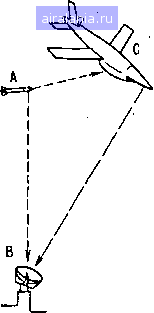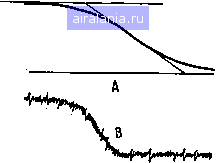

|
|
Главная -> Английский язык 0 1 2 3 4 5 6 7 8 9 10 11 12 13 14 15 16 17 18 19 20 21 22 23 24 25 26 27 28 29 30 31 32 33 34 35 36 37 38 39 40 41 42 43 44 45 46 47 48 49 50 51 52 53 54 55 56 57 58 59 60 61 62 63 64 65 66 67 68 69 70 71 72 73 74 75 76 77 78 79 80 81 82 83 84 85 86 87 88 89 [90] 91 92 93 94 95 96 97 98 99 100 101 102 103 104 105 106 107 108 109 110 111 112 113 114 115 116 117 118 119 120 121 122 123 124 125 126 127 128 129 130 131 132 133 134 135 136 137 138 139 140 141 142 143 144 145 146 147 148 4. ENERGY BALANCE AND MATERIAL PROBLEMS (Для перевода со словарем) It is obvious that controlled thermonuclear power will not be possible unless the many problems of stable plasma confinement and heating are solved. Therefore, thermonuclear research has so far concentrated, and rightly so, almost exclusively upon these problems. The subject has occupied our thoughts through the preceding chapters. It will again do so in the chapters following this one, where we shall discuss briefly a number of recent experimental developments and enlarge upon some of the principles behind them. But there is another aspect: even if confinement and heating were achieved, the structure of a practical thermonuclear power generator would still not be clear. Little real thought has gone into energy balance and material problems pertaining to such a hypothetical device. While any such calculations will be highly speculative, some worth-while points can be made. In particular, we shall conclude that a thermonuclear reactor will be large, with somewhat less assurance, we conclude that profitable power production from a fast pulsed system looks extraordinary difficult of achievement. One thing appears clear - the energy of the thermonuclear neutrons must be recovered as heat. This single fact makes necessary the presence of a heat-recovery blanket surrounding the reactor. In addition, if the reactor operates by D-T fusion (Deuterium - Tritium), the tritium must be regenerated by these neutrons, for no other method seems to be available for producing tritium in the amount required. The blanket then becomes complicated on this account. Further difficulties arise at the vacuum wail that faces the plasma. The heat flux on it may be large, and special efforts may be required to cool it. The function of the blanket must also be compatible with the establishment of the magnetic induction. If the current-carrying coils were normal conductors, they would have to be protected from the neutron flux in order to prevent structural damage and consequent increased resistivity. If such normal conductors were used, the coil power loss would be a significant and perhaps large fraction of the electrical output of the system. Vastly more attractive is the use of superconducting coils for generating static or quasi-static magnetic inductions. Very recent advances in superconducting materials have been unbelievably spectacular. The possibility of reducing the coil power to zero will affect the net power behaviour of thermonuclear reactors very favourably. This application is only one of many which can be envisaged for exploiting loss-free high-magnetic field structures. • 6. DOPPLER TECHNIQUES FOR MISS-DISTANCE INDICATING SYSTEMS (Для перевода со словарем) The main purpose of Miss-Distance Indicating Systems is to determine the minimum distance between an airborne target and the attacking missile during a particular mission. There are two reasons for the need of this information. With modern missiles, a direct hit on the target is not always necessary and misses up to certain distances, depending on the target and missile, will still destroy the target. Also during some training and missile evacuation missions it is desirable not to destroy the target, which can be made recoverable. In this case, the attacking  Fig. I. Diagram of a Doppler miss-distance indicating system. missile can be programmed to miss the target by a certain distance and the knowledge of the actual miss-distance then becomes necessary. There are several systems for obtaining this miss-distance Information. The most popular systems are: optical, in which cine cameras, in "the target or on the ground, are used to photograph the approaching attacking missile. After analysis of the film, the path of the missile, with respect to the target, can be established; radioactive, in wiiicli a radioactive isotope is placed in the attacking missile and the radiation intensity is monitored with instruments in the target. Knowing the sensitivity of the monitoring equipment, the record of intensity vs. time can be used to determine the miss-distance; electronic, in which the miss-distance is determined by electronic means. The electronic approach seems to be the most satisfactory for most applications.  Fig. 2. Typical examples of Doppler frequencies shifts in a miss-distance indication. The Doppler-type miss-distance indicating system is an electronic system. Basically, this system relies on the apparent frequency shift when the source and the observer are in motion with respect to each other. (Such a typical frequency shift is shown in Fig. 2.) The slope of the curve and the assymptotes give the mis-sdistance. The distancebetween the two assymptotes is a function of the relative velocity between the missile and the target. Fig. 1 shows the three major parts of the system with which this type of data can be obtained. The source of the RF signal is usually in the 0 1 2 3 4 5 6 7 8 9 10 11 12 13 14 15 16 17 18 19 20 21 22 23 24 25 26 27 28 29 30 31 32 33 34 35 36 37 38 39 40 41 42 43 44 45 46 47 48 49 50 51 52 53 54 55 56 57 58 59 60 61 62 63 64 65 66 67 68 69 70 71 72 73 74 75 76 77 78 79 80 81 82 83 84 85 86 87 88 89 [90] 91 92 93 94 95 96 97 98 99 100 101 102 103 104 105 106 107 108 109 110 111 112 113 114 115 116 117 118 119 120 121 122 123 124 125 126 127 128 129 130 131 132 133 134 135 136 137 138 139 140 141 142 143 144 145 146 147 148 0.0219 |